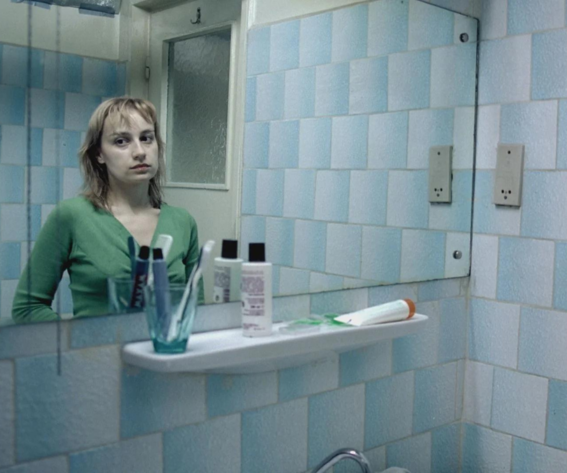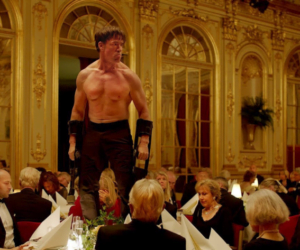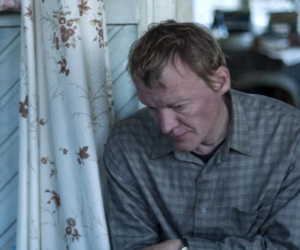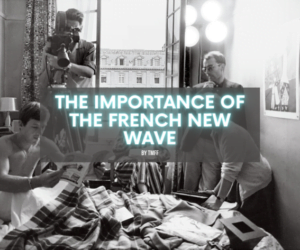I’ve already explored Scandinavian cinema and Irish cinema in previous posts, and I thought I might as well turn this into a series. So, if you’re looking for something different, something that delves into the raw, the real, and the unique, you might want to explore Eastern European cinema. Eastern European cinema is a treasure trove of artistic expression, offering a distinct and compelling alternative to the more commercialized western counterparts. There is plenty of variety within this genre – from classic Russian and Polish productions, to the more new wave Romanian or Baltic directors – and it would be a mammoth task to delve deep into each one of these. So I’m opting for a more generic overview here.
1. Artistic Integrity Over Commercial Success
One of the fundamental characteristics of Eastern European cinema is its unwavering commitment to artistic integrity. While Hollywood often caters to mass audiences and seeks commercial success, Eastern European filmmakers prioritize telling meaningful and thought-provoking stories. They are not afraid to experiment with narrative structures, tackle complex themes, or present stories that challenge societal norms.
This commitment to artistic vision can be seen in iconic Eastern European films such as Andrei Tarkovsky’s “Stalker” and Cristian Mungiu’s “Graduation”. These films dive deep into philosophical questions and explore the human condition in ways that Hollywood rarely does.
2. Realism and Grit
Eastern European cinema is known for its unapologetic embrace of realism and grit. These films often depict the harsh realities of life, focusing on the struggles of ordinary people. Whether it’s the stark portrayal of life under communism or the haunting memories of war, Eastern European cinema does not shy away from uncomfortable truths.
The 2007 Romanian Palme d’Or winning film “4 Months, 3 Weeks and 2 Days” is a prime example of this commitment to realism. Directed by Cristian Mungiu, the film explores the harrowing experience of a woman seeking an illegal abortion during the final years of the Ceaușescu regime in Romania. The unflinching portrayal of the characters’ desperation and the oppressive society they inhabit is both powerful and deeply affecting.
3. Political and Social Commentary
Eastern European cinema has a rich tradition of using film as a platform for political and social commentary. Given the turbulent history of the region, these films often grapple with the impact of totalitarian regimes, political oppression, and social injustice. They serve as powerful tools for reflection and introspection.
The 1985 Polish film “Man of Iron” directed by Andrzej Wajda is a remarkable example. It delves into the Solidarity movement in Poland and provides a compelling depiction of the struggle for workers’ rights. Through this lens, the film explores themes of resistance, hope, and the power of collective action. Now compare this to the superficially defined themes of a certain movie with a similar title… “Iron Man”.
4. Complex Characters and Psychological Depth
Eastern European cinema excels in creating complex and multi-dimensional characters. Filmmakers in this region are known for their ability to delve into the psychology of their characters, often leaving audiences with a deep understanding of their motives and struggles. This attention to character development contributes to the emotional depth of Eastern European films.
A prime example is the 1965 Oscar-winning Czech film “Closely Watched Trains” directed by Jiří Menzel. The film explores the life of a young railway dispatcher who is grappling with his sexual inexperience during World War II. Through this character, the film provides a poignant and often humorous exploration of the human condition and the complexities of desire.
5. Cinematic Aesthetics
Eastern European cinema boasts a unique and captivating visual aesthetic. From the stunning black-and-white cinematography in Soviet classics like “Solaris” to the use of symbolic and surreal imagery in films like “The Double Life of Veronique” by Krzysztof Kieślowski, these films are a visual feast. Directors in this region are known for their innovative use of visuals, often employing symbolism and metaphors to convey their narratives.
6. Minimalist Storytelling
While Hollywood often relies on grandiose narratives, Eastern European cinema embraces minimalist storytelling. It values the power of subtlety and silence, using these elements to communicate profound emotions and ideas. This approach invites viewers to engage more actively with the narrative, allowing them to draw their own conclusions and interpretations.
A fine example of this minimalist storytelling is the 2014 Ukrainian film “The Tribe” by Myroslav Slaboshpytskiy. The film unfolds entirely in sign language, without the use of spoken dialogue or subtitles. This minimalism forces the audience to rely solely on the visual storytelling, resulting in a unique and unforgettable cinematic experience.
7. Long Takes and Slow Pacing
Eastern European cinema often features long, unbroken takes and a deliberate, slow pacing. These techniques create a sense of intimacy with the characters and a heightened awareness of time and space. While some viewers may find this challenging, it can be incredibly rewarding, allowing for a deeper connection with the story and characters.
The 2019 Macedonian film “Honeyland,” directed by Tamara Kotevska and Ljubomir Stefanov, is a masterclass in slow-paced storytelling. The documentary follows the life of a beekeeper in a remote village and immerses the audience in the natural rhythms of her world.
8. Exploration of Identity and Cultural Heritage
Eastern European cinema often delves into questions of identity and cultural heritage. These films explore the region’s complex history, diverse traditions, and the impact of cultural and political changes. They invite viewers to reflect on the meaning of belonging and the preservation of cultural roots.
One notable example is the Hungarian film “Son of Saul” (2015) by László Nemes. Set in Auschwitz, the film follows a Sonderkommando prisoner who discovers the body of a boy he believes to be his son. The film provides a haunting exploration of identity, survival, and the preservation of humanity in the most extreme circumstances. And a similar theme is present in Jasmila Zbanic’s “Quo Vadis, Aida?” (2020), which is set in 1995 during the Serbian invasion of Srebrenica.
In conclusion, Eastern European cinema stands as a unique and essential component of the global film landscape. It is characterized by its commitment to artistic integrity, realism, political and social commentary, complex characters, striking visuals, minimalist storytelling, long takes, and the exploration of identity and cultural heritage. These qualities make Eastern European cinema a rich source of thought-provoking, emotionally resonant, and visually stunning films.
















